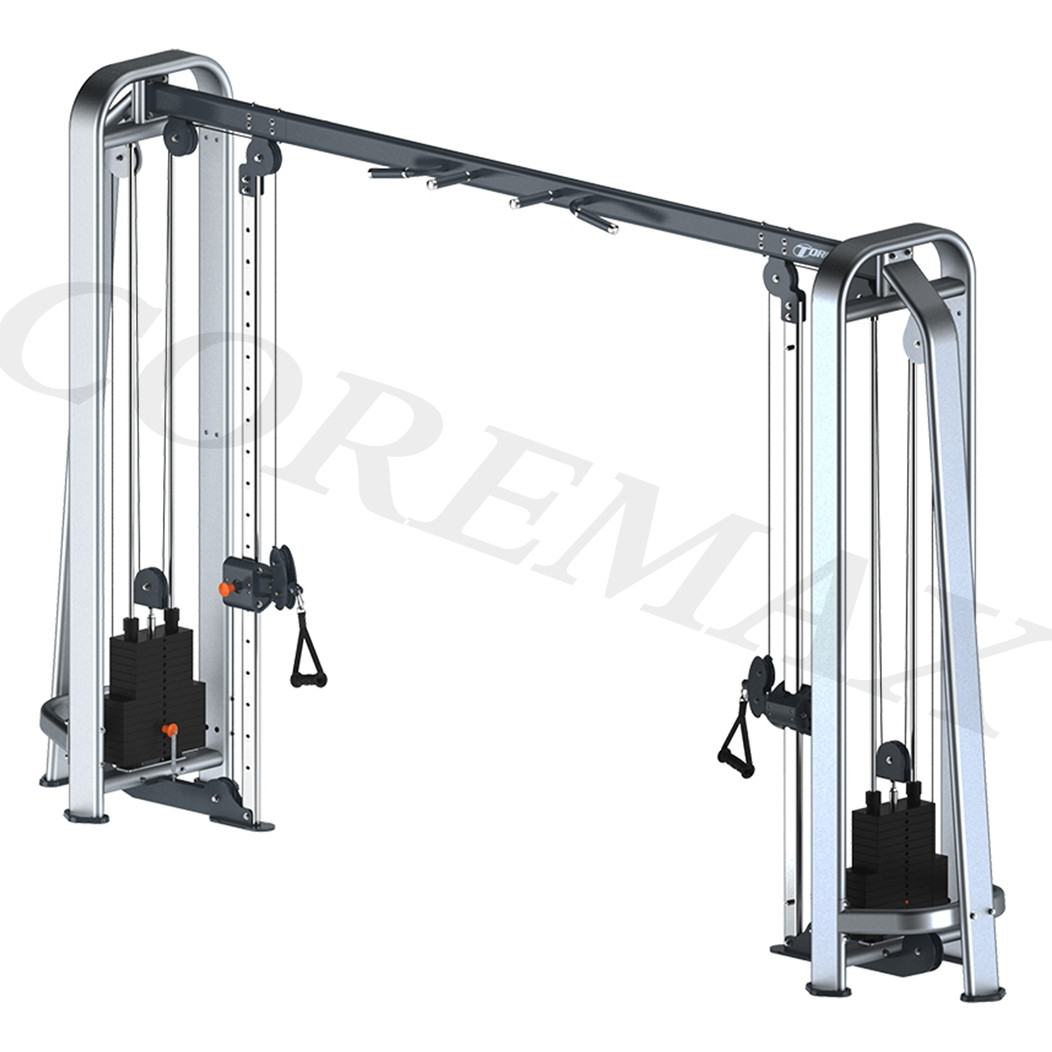How does pectoral muscle train the fastest outline?
If you want to make your chest muscles look better and in better shape, you can't just bench press! Although the multi-joint bench press helps you get maximum muscle and muscle strength growth! But we also need some additional training to help us give the chest muscles a stronger feeling! The Cable Cross Over Machine is a great choice! The Cable Cross Over Machine is an isolated chest workout! Because your triceps are barely engaged. This will give your pectoral muscles a greater pumping sensation, and the Cable Cross Over Machine will also act like a bench press, stimulating you from different angles! There are high, parallel, low rope clip chest!
1. High clipping chest: it is inclined to lower chest and mainly involves the joint -- adduction of shoulder
(1). Stand in the center of the puller frame, fix the cable to a high position, adjust the length of the cable, and stand tall! The body is slightly forward 45 degrees, lunge support, hands holding hands, palm to palm, elbows slightly bent and pointing back slightly,
(2). Pay attention to the control action when opening, feel the chest muscle is stretched, the scapula is in the position of retracting and sinking, try to squeeze the chest muscle when closing, think of two big arms trying to get close, slightly pause for peak contraction.
Notes:
(1). Since it is a one-joint movement, it is recommended that you choose a slightly lighter weight and focus on the extension and contraction of chest muscles! It's easy to get out of shape!
(2). The trapezius and rhomboid muscles of the upper back, as antagonistic muscles of the chest, must be kept in a downward and backward state when expanding the chest, and should not be in a bad state of forward extension and inward rotation of the shoulder.
2. Parallel chest clamping: it mainly exercises the middle part of the pectoralis major, and mainly involves the horizontal adduction of the joint -- shoulder
(1). Cardio Machine Manufacturer shares that the cable can be fixed in a position parallel to the shoulder by standing or sitting in the center of the puller frame. Adjust the length of the cable.
(2). Pay attention to the control action when opening, feel the chest muscle is stretched, the scapula is in the position of retracting and sinking, try to squeeze the chest muscle when closing, think of two big arms trying to get close, slightly pause for peak contraction.
Notes:
(1). Since it is a one-joint movement, it is recommended that you choose a slightly lighter weight and focus on the extension and contraction of chest muscles! It's easy to get out of shape!
(2). The trapezius and rhomboid muscles of the upper back, as antagonistic muscles of the chest, must be kept in a downward and backward state when expanding the chest, and should not be in a bad state of forward extension and inward rotation of the shoulder.

3. Lower chest clamping: it mainly exercises the upper part of the pectoralis major, and mainly involves the joint -- shoulder flexion
(1). Located in the center of the puller frame, you can use standing posture or sitting posture, fix the cable at the lowest position, adjust the length of the cable, hold the handle with both hands, palm to palm, elbow slightly bent and pointing back slightly.
(2). Pay attention to the control action when opening, feel the chest muscle is stretched, the scapula is in the position of retracting and sinking, try to squeeze the chest muscle when closing, think of two big arms trying to get close, slightly pause for peak contraction.
Notes:
(1). Since it is a one-joint movement, it is recommended that you choose a slightly lighter weight and focus on the extension and contraction of chest muscles! It's easy to get out of shape!
(2). The trapezius and rhomboid muscles of the upper back, as antagonistic muscles of the chest, must be kept in a downward and backward state when expanding the chest, and should not be in a bad state of forward extension and inward rotation of the shoulder.
NAVIGATION
E-mail:
cmfitness@aliyun.com
muhammad0001@yandex.ru
Telephone: +86 137 1115 1151
+86 131 1338 5019